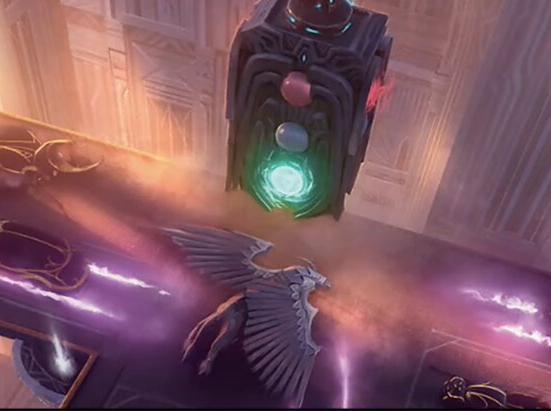Welcome to “Reading the Signposts,” a recurring column analyzing and exploring the design of the specific cards that help players understand the playstyles of the varied limited archetypes of sets (both official and custom-made).
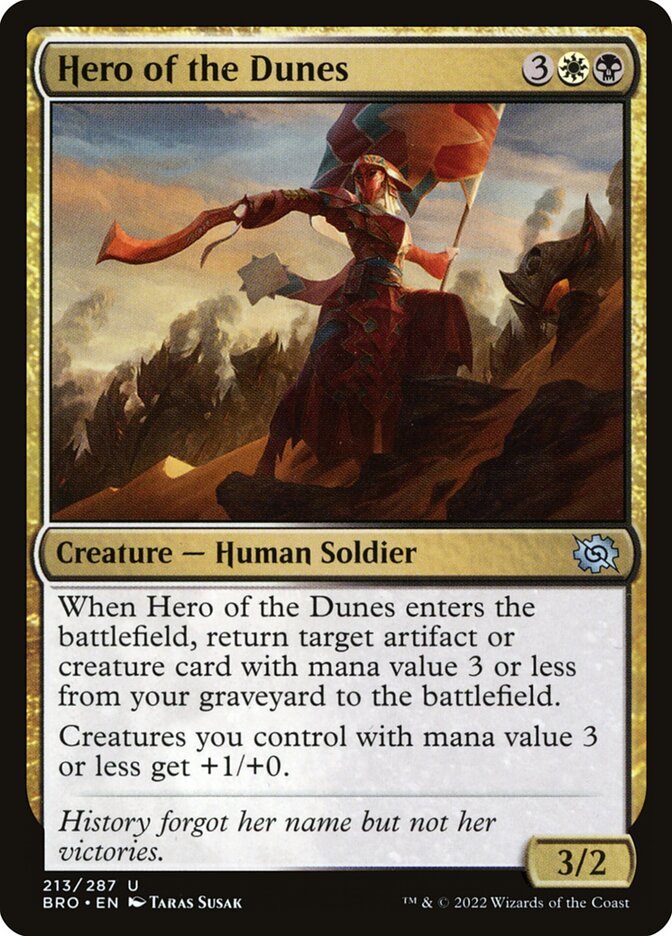
A quick primer on “signposts” for budding designers: With most sets (especially those intended to be drafted), Wizards of the Coast designs a cycle of 10 uncommon two-color gold cards (one for each color pairing) for the purpose of helping players understand the intended archetypes and play patterns for each combination. These cards help signal to players new to the set what mechanics or tactics they may want to use to win games, and thus draft cards appropriately. They are typically (but not always) creatures. Magic: The Gathering Principal Designer Gavin Verhey has a useful video here explaining how they work for the benefit of players.
I’ve been drawn to signpost designs for years. Some players look forward to seeing which planeswalkers, legends, and powerful spells will be showing up in new sets. I’m always waiting to see what the archetypes and signposts will be and analyzing what they’re doing.
For this first column, allow me to describe what I see as three types of signposts and their purposes. I put together these three classifications after paying close attention to these signposts and their role in limited play for several years. If you want to hear me discuss them, I joined an episode of Beacon of Creation in 2021 for a chat. I’ll be using these classifications in future columns to help analyze individual signpost cards so that we can talk about the purpose they may serve (beyond simply as a signal to players) and why they’re designed the way they are. Signposts can be more than just indicators of what an archetype is doing. Signposts can fill important roles in a deck, help make the archetypes cohere together better, and can help players draft and build their limited decks.
Here are the three signpost types I’ve identified and a few simple examples of each type. On some occasions, a signpost may fall into more than one type, depending on the complexity of its design.
Booster Signposts
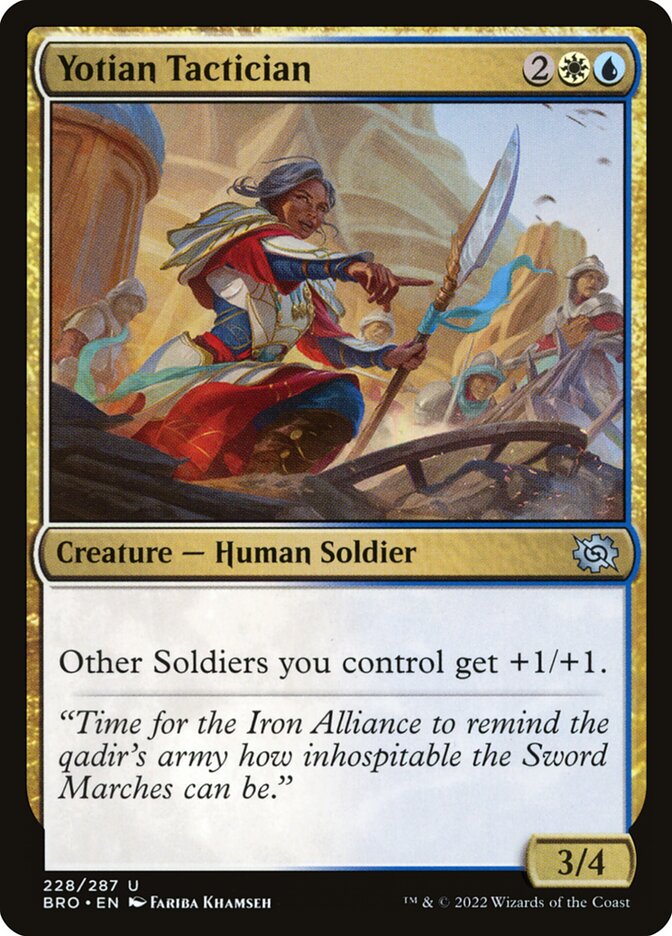
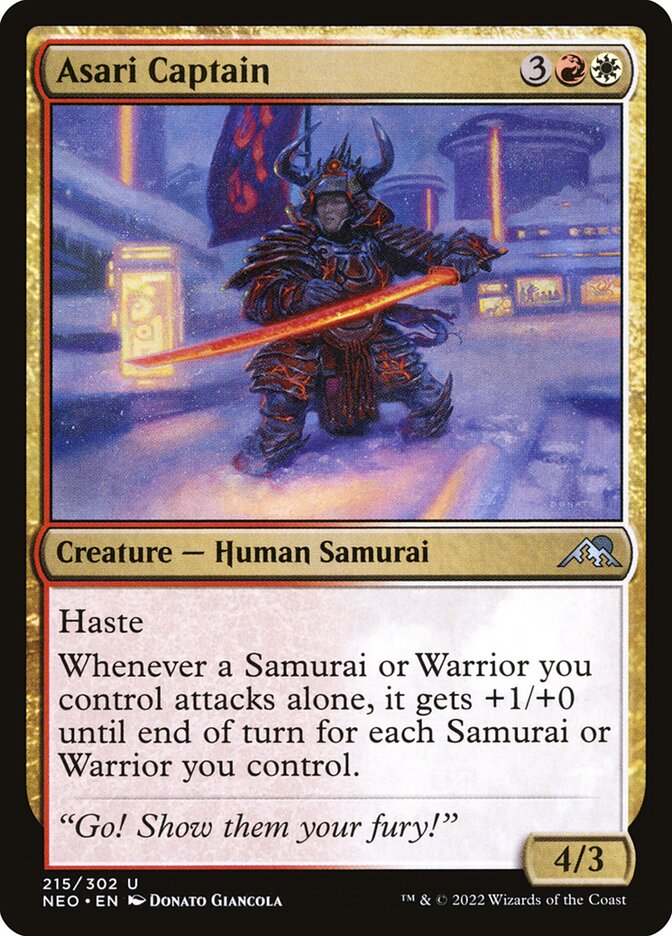
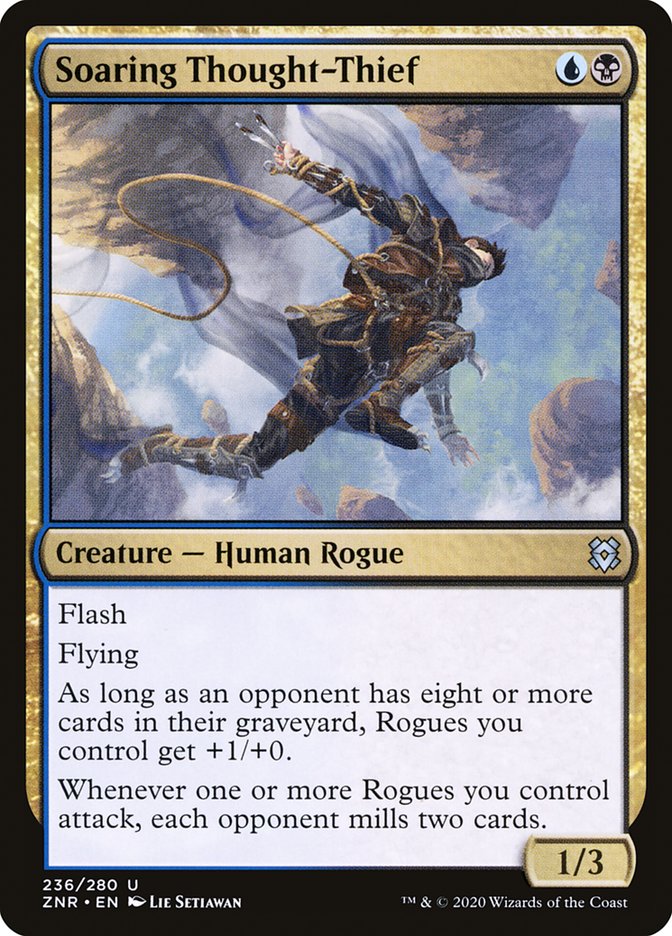
A booster signpost is a card that in some fashion improves a player’s board strength and presence by boosting the power of other cards on the battlefield or by creating tokens or otherwise expanding the battlefield. The most commonly known booster signposts are “tribal lords,” creatures that boost the strength of, put counters on, and/or grant additional abilities to other creatures of a certain type. This signals to players that they should try to draft creatures of that type in order to take advantage of the bonus. Booster signposts can also improve the power of creatures with certain abilities (like flying) or other characteristics (token creatures, artifact creatures, creatures of certain colors, creatures that have auras or equipment attached, etc.).
Booster signposts have the advantage of generally being straightforward and easy to understand for players of all experience levels. If a signpost card gives a +1/+1 bonus to merfolk or goblins or creatures with menace, it clearly tells players to look for those cards. They are particularly helpful for archetypes with “go wide” strategies that encourage players to try to get many creatures onto the battlefield at once. They can help break combat stalemates (an occasional problem in creature-focused limited games) by suddenly giving a player a significant advantage on the battlefield.
Payoff Signposts
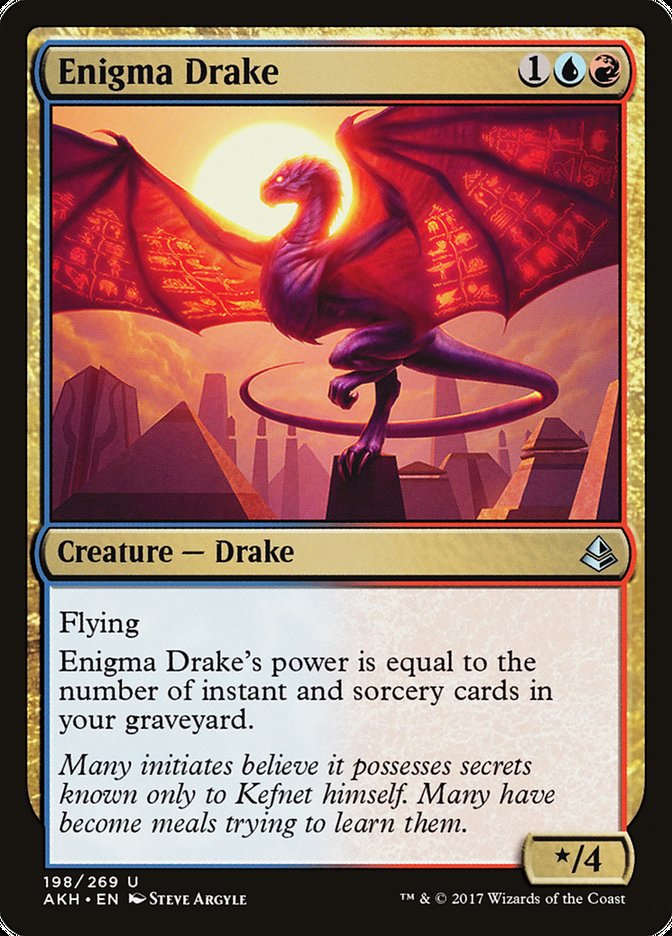
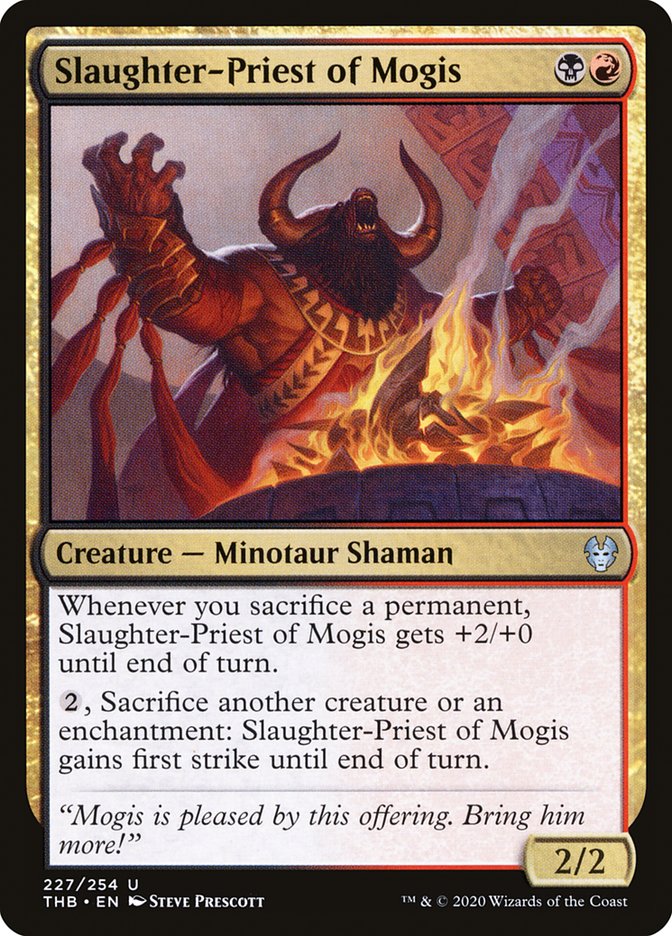
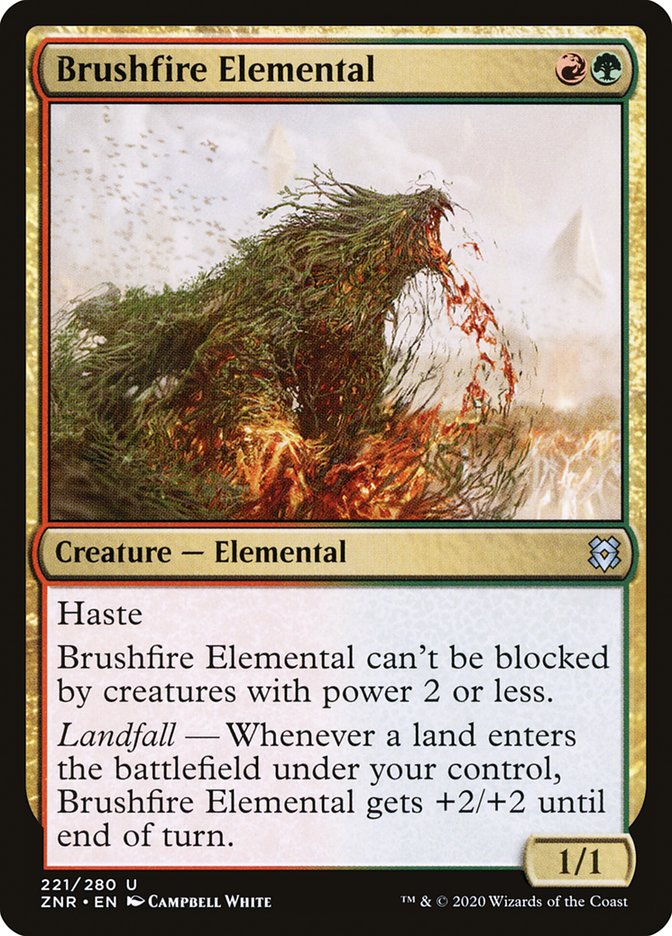
Almost the reverse of a booster signpost, a payoff signpost itself grows stronger or triggers powerful abilities as the player takes advantage of the mechanics associated with the archetype. This could be a creature that gains power (either temporarily or with +1/+1 counters) when the player plays spells or takes actions of a certain type. It could be an artifact that deals damage to opponents or creatures when certain conditions are met. There are wide varieties in potential payoffs. While a booster signpost often tells players “Play me and I’ll make your battlefield stronger,” a payoff signpost says “Do this and I’ll help you win.”
Payoff signposts are very important when the central mechanics for an archetype don’t organically create actual victory conditions, such as archetypes that revolve around playing lands or casting non-creature spells. Other archetypes and mechanics require players to risk their resources by sacrificing creatures or artifacts, milling cards from their library, discarding their own cards, or exiling cards from their graveyard. For these archetypes, it’s very important that the player has several ways to turn these mechanics into win conditions. Payoff signposts are intended to keep these decks from getting stuck spinning their wheels.
Facilitator Signposts
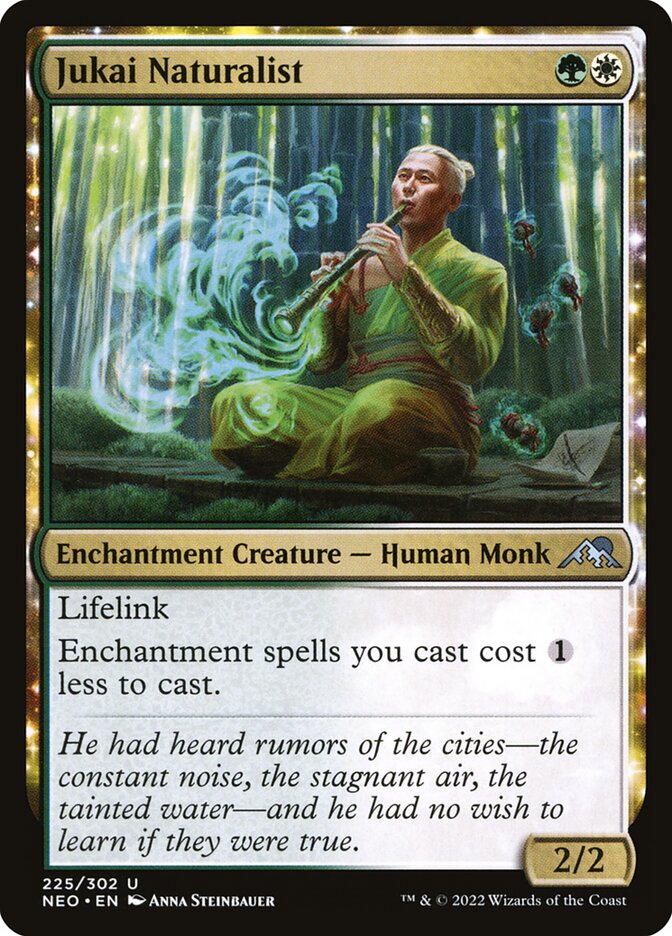
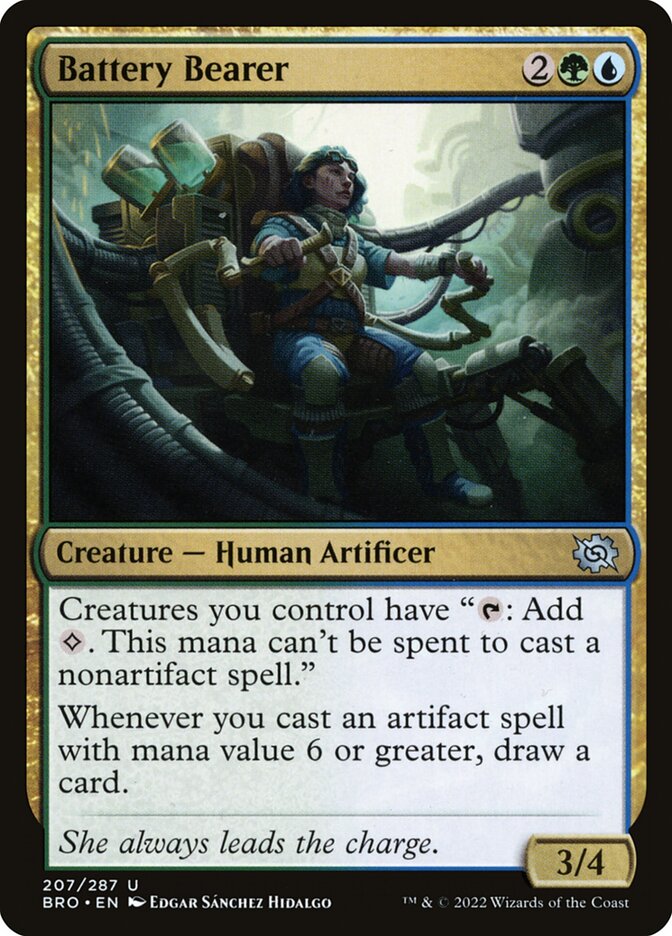
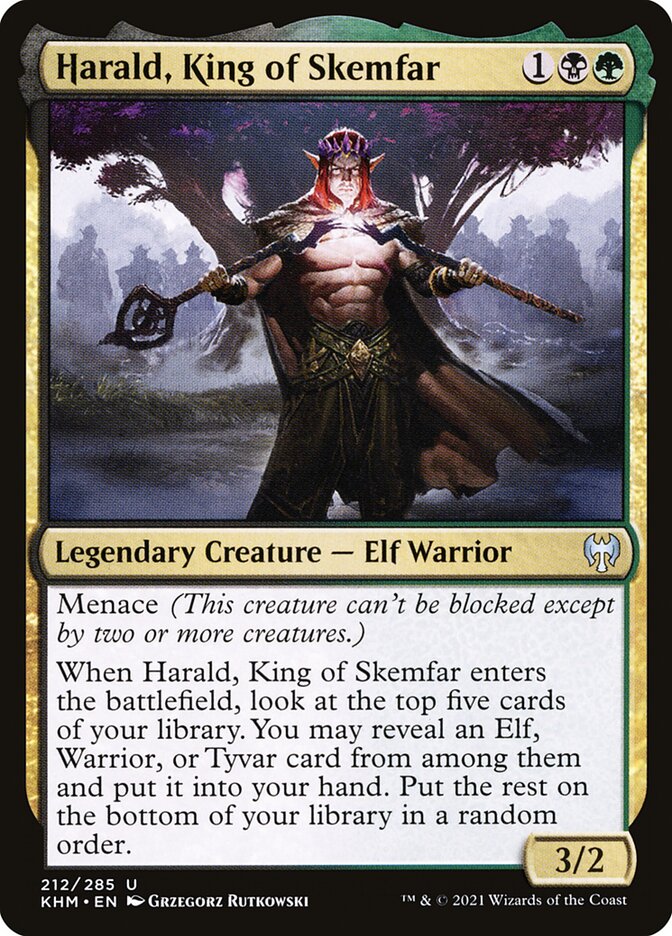
The more subtle of signposts (sometimes, arguably, too subtle) are the facilitators. These are cards help players interact with the mechanics of an archetype, sometimes making them cost less, sometimes improving access to resources (like cards, life, and/or mana) to grant advantages outside of the battlefield. If, for example, a set has a special mechanic that has a cost to activate, a facilitator signpost may make it cheaper for a particular archetype.
Facilitator signposts may occur for a couple of reasons. Some archetypes, like those focusing on ramping up to large creatures, casting expensive spells, or interacting with the graveyard, may not truly kick in until later in the game. Facilitators can help players of the archetype get to that spot more quickly with additional cards, free mana, and casting cost reductions if certain conditions are met. This will allow those players a chance to hold out against faster archetypes and still win. Facilitators can also be useful when there’s a mechanic for the set that appears in several or all colors, but one particular color pair is designed to be more efficient or effective than others at using that mechanic as its theme.
Facilitator signposts can also, slightly more awkwardly, simply be tools to make a color pair play more smoothly when its archetype doesn’t really have a heavy footprint in the set. Due to limits in design space and the number of cards in a set, some archetypes simply have more depth than others. Granting a player’s deck more access to resources like cards and mana usually helps that player win, but sometimes it’s not entirely apparent how with these signposts for shallower archetypes. Players with less experience might not be able to determine what it is they’re being asked to do, and the rewards for doing so are not as obvious as they are with booster and payoff signposts. While facilitator signposts can be helpful and very strong (particularly for experienced players) the “signs” they send can be missed, sometimes because they’re actually warning that the road you’re taken is not as well-traveled as others.
In my next two columns, I’ll be looking over the signpost uncommons of March of the Machines (five per column) and analyzing what budding designers might learn from them.
